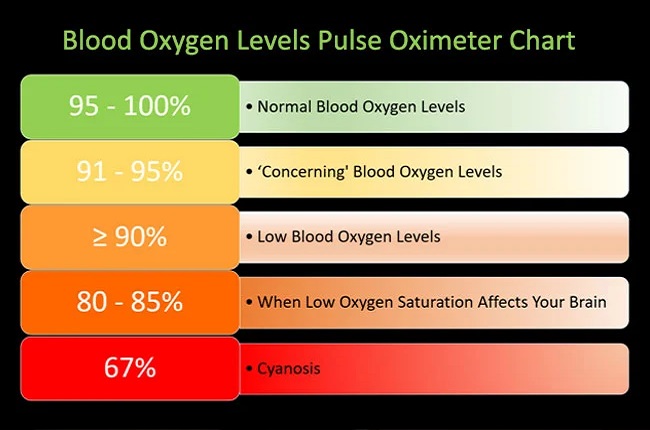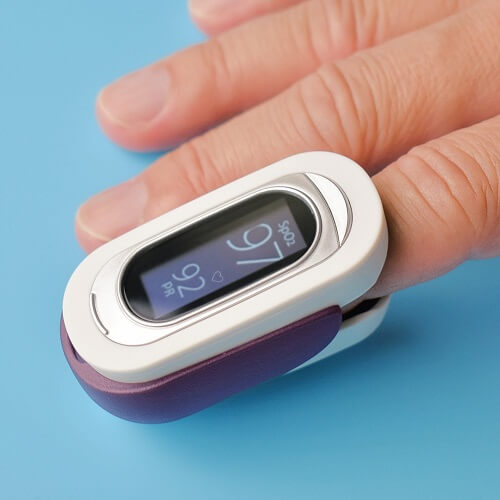Oxygen levels are not something that most adults regularly pay attention to. Yet it is crucial to monitor the oxygen levels for adults in certain risk groups. This is especially true in people who are affected by medical conditions that impair oxygen intake.
Who Needs to Measure Their Oxygen Levels?
If you’re affected by medical conditions such as anaemia or chronic obstructive pulmonary disease (COPD), you may require routine monitoring. This also applies to any condition that affects your blood oxygen level.
These types of conditions reduce how much oxygen you inhale and therefore how much of it is carried by your blood. If these medical conditions are severe enough, they can cause a sharp decline in oxygen levels.
How to Check Oxygen Levels
There are two different tests that can gauge your blood oxygen level. The first is known as an arterial blood gas test, and it is the most accurate way to gauge oxygen levels for adults. Blood gas machines are found in hospitals, and not only accurately measure your blood oxygen level, but they can detect other gases in your blood as well. Although it is the most accurate way to measure oxygen levels for adults, having an arterial blood gas test can be painful and uncomfortable. In it, a doctor must draw blood from an artery, which can be unpleasant.
The second method to measure blood oxygen levels for adults is through a pulse oximeter. A pulse oximeter is a small device that calculates how much oxygen is in your blood through light rays. It can be read from your toes or fingers. While not as accurate as an arterial blood gas test, it still gives a reasonable indication of how much oxygen is in your blood. Unfortunately, because of the carbon monoxide that builds up in your blood when you smoke, smokers may receive an inaccurate reading.
What is a Pulse Oximeter?
A pulse oximeter is a device that clips onto the end of your fingertip. It uses light to calculate the density of the oxygen in your blood. They are simple consumer devices that can be bought from a range of retailers. However, it is recommended to consult a doctor before you use one, as they will tell you what a healthy reading for you may be.
Non-intrusive and painless, a pulse oximeter makes monitoring blood oxygen levels for adults and children simple.
Are Pulse Oximeters Accurate?
For a lot of people, pulse oximeters are accurate enough to safely monitor oxygen levels. However, there is a 2% margin of error due to the simple nature of the device. There are also external factors that can affect a pulse oximeter’s accuracy. We have already discussed how smoking may create inaccurately high readings. Nail polish is also known to interfere with the device, as it can reflect too much light back into the device. People with darker skin tones may have difficulty getting accurate readings for similar reasons.
Normal Range of Oxygen Levels for Adults

Oxygen levels for adults are measured by calculating the saturation of oxygen in their bloodstream. When gauged by an arterial blood gas machine, the standard oxygen range for healthy lungs is between 80 and 100 millimetres of mercury. When using the pulse oximeter, a healthy reading is usually between 95 and 100 percent.
If you have a condition that affects your lungs – such as COPD – your healthy ranges may be different. Your doctor will inform you of what readings to expect. Oxygen levels for adults can differ based on a multitude of factors, therefore it is particularly important to know what your expected range should be.
Dangerous Oxygen Levels
Falling below the safe oxygen level range is called becoming hypoxemic. You may have heard of it as ‘hypoxia’. If you become hypoxemic, you may experience symptoms like fast heartbeats, confusion, chest pain, shortness of breath, coughing, or headaches.
If your oxygen level continues to fall, the skin underneath nails, lips, or other parts of your body may start turning blue. This is known as cyanosis. If you notice this discolouration, you must seek medical attention immediately. In severe cases, cyanosis is an early sign of respiratory failure.
How to Maintain Oxygen Levels
If blood oxygen levels for adults fall too low, the best way to increase them is through a source of supplemental oxygen. This typically takes the form of a ventilator in a hospital, but doctors can prescribe home supplemental oxygen if it is required for a medical condition. They will also attempt to tackle the root cause of the hypoxia.
There are ways to maintain and potentially increase oxygen levels at home. A balanced and healthy diet with a suitable number of antioxidants aids the body in using oxygen more efficiently. This, coupled with drinking plenty of water, is a suitable way to ensure your body can do more with the oxygen you are inhaling naturally.
Our Mission
Telecare Choice strives to help people live confidently and independently in their own homes. If you have a condition that requires you to monitor your blood oxygen levels, our personal alarm systems may offer additional peace of mind. They are designed to help elderly and disabled people stay independent in their own homes. If you ever have a fall or feel unwell, pendant alarms will ensure that you can call for help quickly.
Find out more by calling our friendly team today. You can reach us on 0800 635 7000. Alternatively, get in touch online via our contact us page.
You can order a Telecare alarm online today and receive free next-day delivery.
Editor’s Note: This article was updated on 5th March 2024 to reflect current information.



